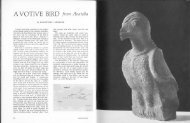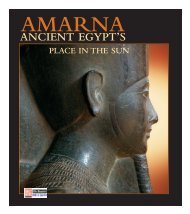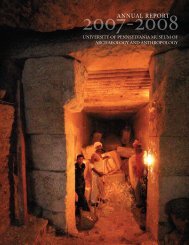Ancient History Math Mystery
Ancient History Math Mystery
Ancient History Math Mystery
You also want an ePaper? Increase the reach of your titles
YUMPU automatically turns print PDFs into web optimized ePapers that Google loves.
BABYLONIANS<br />
5<br />
The Babylonians lived about 5,000 years ago in an area known as<br />
Mesopotamia. Archaeologists believe that they developed one of<br />
the first written numeral systems. The Babylonians had a numeral<br />
system that was a combination of a unary and a positional system.<br />
The Babylonian system of writing is called cuneiform, which means<br />
wedge-shaped in Latin. If you examine the Babylonian number<br />
system, you can see that the numerals resemble tiny wedges.<br />
In cuneiform the numeral 7 looks like this:<br />
And the numeral 27 looks like this:<br />
CONTENT<br />
<strong>Ancient</strong> <strong>History</strong> <strong>Math</strong> <strong>Mystery</strong><br />
This works for numerals up to 59. But take a look at the cuneiform numeral for 60 in the box in<br />
the upper right. It looks just like the cuneiform numeral for 1, doesn’t it?<br />
When the Babylonians wanted to show numerals above 60, they made sure to leave a space<br />
between the 60s and the ones to avoid confusion. It still can be a little confusing!<br />
= 63<br />
Babylonian<br />
Numeral System<br />
= 1<br />
= 10<br />
= 60<br />
The Babylonian system is base 60, or sexigesimal. Take a look at how their place value<br />
system worked.<br />
Try to determine the value of the cuneiform numerals in the place value chart below. Write<br />
your answers using our numerals in the column labeled Numeral.<br />
Cuneiform Place Value<br />
▼ ▼ ▼ ▼<br />
12 x 60 3 = 2,592,000 2 x 60 2 = 7,200 10 x 60 1 = 600 4<br />
2,599,804<br />
216,000s (60 3 ) 3,600s (60 2 ) 60s (60 1 ) 1s Numeral
















